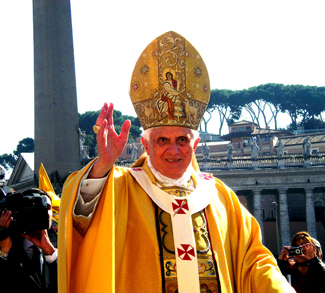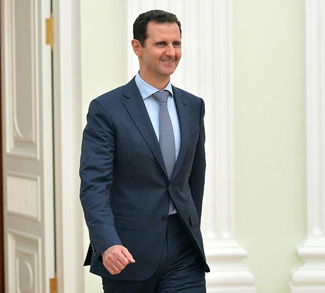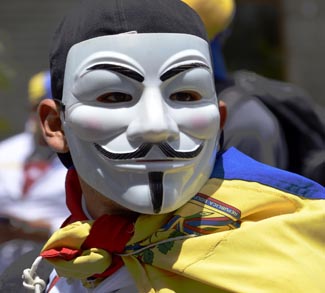On Monday, February 11th, to a routine consistory of Cardinals sparsely attended by the media, a conservative pope delivered a revolutionary statement: Pope Benedict XVI, the 265th Bishop of Rome, spiritual leader of the world’s 1.2 billion Catholics, at the age of 85, announced his resignation from the pontificate, effective on the 28th of the same month, at 8:00 PM, becoming the first pope in 600 years, and only the fourth pope in history, to voluntarily relinquish the most powerful office in the Roman Catholic Church. His reign spanned the years 2005 to 2013, a relatively short but reformist tenure, whose consequences will be felt for years to come.
Papal vacancies, and the rare instances when there have been resignations, have always been of monumental relevance to the world of international politics. It is often forgotten that the Vatican, beneath its gold and Renaissance splendor, is an independent state, a non-hereditary, triple-crowned monarchy headed by the pope, a temporal princedom that according to Catholic doctrine, bridges the chasm between Heaven and Earth. The pope has many titles, chief of which is Pontifex Maximus—“Master Bridge-Builder”—an imperial title inherited directly from the Roman emperors, whose successor he is in the Roman imagination, as Italian political theorist Francesco Orestano wrote in 1915: “The papacy, an ambitious Latin conception, is the titanic expression of Roman imperialism become spiritual.” A government that hails back to the fourth century, the Holy See is today the longest-running, continuous political institution in the western world, and the Catholic Church, which it rules, is estimated to be the world’s third largest landowner, with over 177 million acres under its direct charge. Perhaps counter-intuitively to mainstream theories of universal western secularization, the 20th and 21st centuries have seen the role of the Holy See expanded to unprecedented levels of international activity, finding that its millenary appeal is well-served by a confident use of modern communications, and an astute participation in modern geopolitical dynamics. The Holy See’s Secretariat for Relations with States—served by the historically omnipresent Apostolic Nuncios and their priestly staffers—dispatches empurpled diplomats to 179 countries, and has a permanent presence at the United Nations, the Organization of American States, the World Trade Organization, as well as being active in Interpol, the IAEA, amongst many other international institutions.
The government of the Holy See is the person of the pope, and secondarily, through him, and only in accord with him, the Roman Curia, that is, the scarlet-robed Cardinals and their staffs. The Holy See is the principality, and Vatican City is the territory. Theoretically, as it has happened in various points in its long history, the Holy See can leave the Vatican and continue its governance of the Church elsewhere. The pope performs his duties as an office, a sort of capacity that resides in the man from his acceptance of the throne until he dies or resigns, as canon 331 of the Code of Canon Law states: “By virtue of his office he possesses supreme, full, immediate, and universal ordinary power in the Church, which he is always able to exercise freely.” Unlike the Buddhist doctrine on the Dalai Lama, where the chosen Tibetan is the cosmic incarnation of some divine principle, the pope is an officeholder who is only “pope” for the duration of his will to be pope, which usually means until death. Current canon law provides for papal resignation, so long as the abdication is absolutely voluntary and duly announced.
Resignation as an Emergency Contingency: Recent Memory
As pundits rage about the cataclysmic novelty of a 21st century papal resignation, making the customary rhetorical allusions to Medieval ecclesiastical dramas and pre-modern precedents, political analysts must look at the pope’s abdication in light of the Holy See’s institutional priorities, and its more recent institutional views of pontifical abdication. As the sum of a number of instances in the modern history of the Holy See, papal resignation, as a theoretical concept, has materialized as a strategic contingency that one could call the “conditional resignation contingency”—in which a potential resignation has been judicially devised as a mechanism of sovereign governmental survival, should the pope be physically impeded by a foreign aggressor. This contingency has, historically, taken the following form: a foreign aggressor is potentially a threat to the physical safety of the pope, and is willing to arrest and use him as leverage for some political reason; the pope, in order to thwart any benefit from such a hypothetical abduction, signs or verbally declares the circumstances upon which he would cease to be pope, thereby bringing to nihil the aggressor’s plans. This contingency plan has recurrently taken the form of a written document, sealed in red wax and stamped with the reigning insignia, in which the pope declares his resignation should a particular occurrence takes place.
We point out such an instance of the “conditional resignation contingency” in the case of Pope Pius VII in 1804. Having previously arrested and exiled the infirm, and now dead, Pope Pius VI, Napoleon Bonaparte was now summoning the new pope, Pius VII, to Paris for the imperial coronation, to serve as the stooge of his famous and iconographic display of dramatic statist stagecraft: Napoleon grabbed the crown from Pius’s hands, crowned himself, and thus showed in brusque Napoleonic fashion how the new order of national-secular imperium is divested of its once theoretical, “sacral” dependence on the altar, and consequently, on the pope. Pius VII, wary of the French ruler, left instructions in Rome that if he should be arrested and imprisoned in France, he would automatically cease to be pope, and a conclave was to be convoked with all possible rapidity. Provisions were thus made to avoid a modern Avignon Captivity, even if that meant the death of the pope at the hands of his imperial hosts!
An even more dramatic example of a recent, and also unconsummated, use of the “conditional resignation contingency” occurred during World War II. As Italy signed its armistice with the Allies in 1943, and the Wehrmacht rapidly moved to occupy Rome, German paratroopers surrounded the perimeter of St. Peter’s Square—the international border between Italy and the Holy See—and awaited their Fuhrer’s orders to move in for the kill. The commander of the Swiss Guards dutifully prepared his troops for a last stand against the Nazis, but was ordered by the pope himself to lay down his arms: though convinced of the potentially mortal danger he was in, Pius XII wanted no futile display of sacrificial loyalty. Behind the scenes, Nazi foreign minister Joachim von Ribbentrop, personally begrudging the pope for the pontiff’s cataloguing of Nazi atrocities to his face in a private audience in 1940, was urging Hitler to decapitate the Vatican in a single strike by imprisoning the pope. Exclaiming that only in chains would he abandon his Vatican, Pius XII rejected pleas to escape to Spain or the United States, and decreed that, should he be captured by the Nazis, “the person who would leave under these conditions would not be Pius XII but Eugenio Pacelli,” and that the cardinals must then flee to Portugal and hold conclave—and the temporary, subsequent Papal Court—in exile.
An Inescapable Precedent: Dangers Remembered, Dangers Foreseen
The history of papal resignations is dark and treacherous, and there is not even an attempt to sanitize it. Catholic authorities recognize four abdications, including Pope Benedict XVI’s, and of the previous three, only Pope Celestine V’s (1294) was absolutely voluntary. However, after resigning and retiring to a life of prayer, Celestine was cruelly imprisoned by his successor, Boniface VIII, leaving the “pope emeritus” to languish and die in a dank cell. Dante, in his Divine Comedy, has harshly immortalized this papal renouncer by condemning him to the antechamber of Hell, where he is poetically punished for his “great refusal” amongst the souls who were neither good nor evil. Pope Benedict XVI was photographed in 2009 paying homage to Pope Celestine’s tomb, and even placing his pallium (ancient episcopal vestment) upon it. Few could have envisioned that the gesture would mean so much more than a prayer. The other papal resignations of history came under even worse, mortal duress, including the last one before Benedict XVI, Gregory XII, who in 1415 resigned in order to heal the “Great Western Schism”—a crisis that at certain points saw up to three claimants to the papal throne!
Benedict XVI cites as reasons for his historic resignation his deteriorating health and diminishing strength, which Vatican watchers have been noticing for some time. The pope’s daily schedule is physically rigorous and always intellectually challenging. From his daily rise at 5:00 AM, his day comprises hours of study, writing, meeting with foreign dignitaries, praying, and usually doesn’t end before 11:00 PM. It is one of the few governmental offices in the world where only a solemn tradition guides his path—and that same tradition will scrupulously judge every moment of his reign. In several published works, as pope and previously as cardinal, he had made it repeatedly clear that his own criterion for resignation was decidedly general, as he included “psychological” and “spiritual” frailties as part of a pope’s justifiable reasons for abdication. His abdication is nothing short of revolutionary, and there is no doubt that in a few weeks the cardinals in conclave will be very conscience of the gargantuan presence of a living “ex-pope”—even though Benedict will not be inside the Sistine Chapel during the election. Even after his resignation becomes effective, he will retain his pontifical name, “Benedict,” and will not revert to his former cardinalatial title—the Vatican going so far as not rejecting the possibility that he may still be referred to as “His Holiness.”
His resignation will, no doubt, create a precedent, and one that his predecessor, John Paul II, finally felt unwilling to set. In 1989 he signed a document that would affect his resignation should he become incapacitated, an intention he restated in 1994, while simultaneously telling his surgeon that “there is no place in the Church for a pope emeritus.” As the world knows, he finally opted not to tread the unchartered waters of a modern papal abdication. Now, there will be a “Bishop of Rome Emeritus,” as the Vatican has announced, regarding the future title of the abdicating pontiff.
Pope Paul VI in 1965 also contemplated resigning, but he provided an unusually frank and realistic reason why it would be a perilous precedent to set. He was fearful that the precedent would enable factions within the Church to leverage influence in ways that would inflict unbearable stress upon the office, and thereby forcing the pope to resign. That could also include the rather less roundabout way of actually forcing a resignation, one that the public would never suspect because of a precedent so respectfully placed.
Vacant See: Worries of World Powers
The papacy, even in its medieval imperialist heyday, has never been an important military player outside of central Italy. Rather, its immense power lies in its masterful ability to religiously legitimize ideology as an instrument of state power, and in so doing, advance its own interests through strategic alliances with secular powers. The 20th century’s Cold War saw precisely this dynamic in play, as the papacies of Pius XI, Pius XII, and then especially the pontificate of John Paul II, actively and aggressively aided Western efforts against the ferociously anti-Catholic Communist regimes of the Eastern Bloc, and against the leftist Third World guerillas, which often used heterodox principles of Catholic theology to advance their revolutionary agendas. Former National Security Adviser Zbigniew Brzezinski was so impressed by the Vatican’s geostrategic astuteness, that in his memoirs he went so far as to say that the United States would have been better served by John Paul II as president, rather than Jimmy Carter! American intelligence officials were amazed at the bureaucratically unhampered celerity by which Vatican clerical spooks operated in Poland and Latin America, bringing to bear the Church’s unrivaled “grassroots” presence in the Catholic world. The magnitude of the geopolitical partnership between U.S. and Holy See intelligence services was the prime reason that President Ronald Reagan extended full diplomatic recognition to the Vatican in 1984, solidifying an alliance that ensures cooperation and information-sharing between the two countries to this very day. Pope Benedict has kept this alliance intact, but in the ambiguous world of the Vatican’s “sacred” and philosophical politics, nothing is ever absolutely secure.
When the U.S. war against Islamic radicalism began in 2001, the Vatican, under Pope John Paul II, proved very supportive, though also selectively critical, a policy continued by Pope Benedict XVI. The Holy See has intensified its own efforts to understand and combat international jihadism, precisely because it sees it not only as a philosophical, existential threat to western civilization, but also as a proven, deadly enemy of Catholic and Protestant missionaries in Africa and Asia. In 2005, radicals used Pope Benedict’s Regensburg Lecture as a rhetorical explosive device to cause violent uproar in the Arab Street, a crisis that saw mobs of angry protestors reminiscent of the Rushdie Affair. The lecture was, in reality, part of a larger Vatican campaign to call upon Muslim leaders to denounce forced conversions. In 2008 the pope publicly baptized a prominent Italian Muslim at an Easter Mass, incurring the rhetorical wrath of Muslim fundamentalists all over the world, who made it clear that the pope had become a target of the jihadists.
The Vatican’s ideological support, throughout history, has proven virtually unquantifiable in its value for national and international political dynamics. The “papabili,” or “papable” cardinals, are being scrupulously analyzed by government agencies, searching for hints as to what each cardinal’s pontificate would mean for their respective governments if he were to be crowned. Since the days of the foreign royal veto of papal candidates are irretrievably lost, the political world is reduced to waiting and speculating—and, as the media will tirelessly remind us, nothing will return to normalcy until a new pope is chosen.




